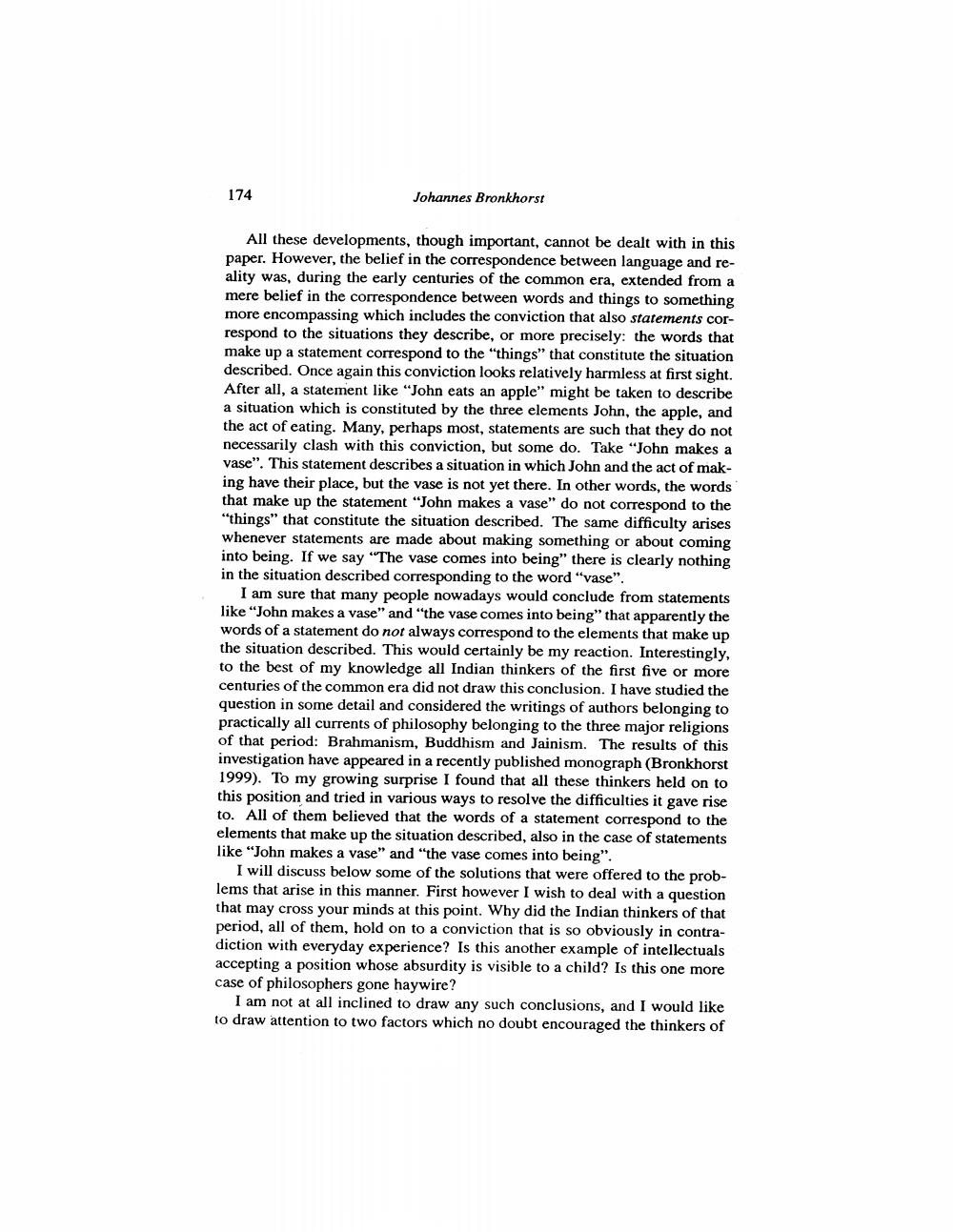________________
174
Johannes Bronkhorst
All these developments, though important, cannot be dealt with in this paper. However, the belief in the correspondence between language and reality was, during the early centuries of the common era, extended from a mere belief in the correspondence between words and things to something more encompassing which includes the conviction that also statements correspond to the situations they describe, or more precisely: the words that make up a statement correspond to the "things" that constitute the situation described. Once again this conviction looks relatively harmless at first sight. After all, a statement like "John eats an apple" might be taken to describe a situation which is constituted by the three elements John, the apple, and the act of eating. Many, perhaps most, statements are such that they do not necessarily clash with this conviction, but some do. Take "John makes a vase". This statement describes a situation in which John and the act of making have their place, but the vase is not yet there. In other words, the words that make up the statement "John makes a vase" do not correspond to the "things" that constitute the situation described. The same difficulty arises whenever statements are made about making something or about coming into being. If we say "The vase comes into being" there is clearly nothing in the situation described corresponding to the word "vase".
I am sure that many people nowadays would conclude from statements like "John makes a vase" and "the vase comes into being" that apparently the words of a statement do not always correspond to the elements that make up the situation described. This would certainly be my reaction. Interestingly, to the best of my knowledge all Indian thinkers of the first five or more centuries of the common era did not draw this conclusion. I have studied the question in some detail and considered the writings of authors belonging to practically all currents of philosophy belonging to the three major religions of that period: Brahmanism, Buddhism and Jainism. The results of this investigation have appeared in a recently published monograph (Bronkhorst 1999). To my growing surprise I found that all these thinkers held on to this position and tried in various ways to resolve the difficulties it gave rise to. All of them believed that the words of a statement correspond to the elements that make up the situation described, also in the case of statements like "John makes a vase" and "the vase comes into being".
I will discuss below some of the solutions that were offered to the problems that arise in this manner. First however I wish to deal with a question that may cross your minds at this point. Why did the Indian thinkers of that period, all of them, hold on to a conviction that is so obviously in contradiction with everyday experience? Is this another example of intellectuals accepting a position whose absurdity is visible to a child? Is this one more case of philosophers gone haywire?
I am not at all inclined to draw any such conclusions, and I would like to draw attention to two factors which no doubt encouraged the thinkers of




